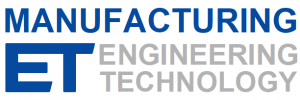LECTURE PRESENTATION
Reading Assignment
- FTD Chapter 3
- Engraver1
Recommended Reading
- Geometry of Single-Point Turning Tools and Drills
- Drill Nomenclature and Geometry
- Metal Cutting Mechanics
- Metal Cutting
- Cutting Tool Engineering Magazine (YouTube Channel)
- Merchant’s Circle
- Sandvik Tips Films
- Ingersoll High Speed Videos
- Nachi End Mill Training
Video Lectures
- Lecture Series on Manufacturing Processes II by Prof.A.B.Chattopadhyay, Prof. A. K. Chattopadhyay and Prof. S. Paul,Department of Mechanical Engineering, IIT Kharagpur.
Outline
Machining
Machining Definition: Changing form and dimension of a component through metal removal.
Elements of Machining
Cutting tool
Tool holding and guidance
Workholding
Workpiece
Machine Tool
Note: Rigidity among these elements is of fundamental importance.
Basics of Metal Cutting
Single-Point Tooling
Cutting tool must be harder and more wear-resistant than the workpiece
Interference between tool and workpiece designated as feed and depth of cut
Rake Face
- Surface the chip flows across
Flank
- Surface that forms the outer boundary of the wedge
Side Cutting Angle
- Protects the tool nose as the tool enters the cut
- Also eases out of the cut.
- Can allow a larger nose tip angle
- Reduces chip thickness for a given feed
- This can reduce heat
End Cutting Angle
- Provides clearance
- Reduces Radial forces, heat, and friction
- Should be generous for thin material or small diameter
- Heavy cuts and strong materials require less
Combination between SCA and ECA allow for a smaller nose radius, stronger/larger included angle.
Nose Radius
- Important to strength
- Larger nose radius, more strength
- Small nose radius advantageous when machining work hardenable material.
- Important to surface finish
- Is the weakest point of the tool
Rake Surfaces
- Rake is angle between the tool face and a line perpendicular to the cut workpiece surface
- Positive for free machining action, soft metal, ductile matrial, aluminum
- Better chipbreaking action
- Increases shear angle
- Negative rake for strong tool, interrupted cut
- Increases mass of tool, more heat absorption
- Reduces pullin- in
Relief and Clearance Angles
- Prevents interference between tool flank and work
- Avoid friction and heat
- Secondary angles usually called “clearance”
- Sometimes necessary for tool grinding purposes
Chip types
Type 1 – Discontinuous or Segmented
Type 2 – Continuous
Chipbreakers
Mechanisms of Chip Formation
The cutting process generates heat
The thickness of the chip is greater than the thickness of the layer being cut
The hardness of the chip is usually much harder than the parent material (strain or work hardening)
Differences in these relative values produce different chip types (plastic flow, vs. shearing)
Manipulating Factors
Velocity (Speed)
Affects temperature
Size of cut
Feed rate and depth of cut
Tool Geometry
Tool Material
Cutting Fluids
Workpiece Materials
Orthogonal and Oblique Cutting
Assumes tool is extruded straight out of the diagram
For a given material, the shear angle (theta) is a function of the tool rake angle and the coefficient of friction along the tool face.
Low and negative rake angles
- Increase tool strength
- Decrease the shear angle
- Increase resistance to chip flow
- Increase chip distortion
- Increase chip breaking action
- Increase work hardening of the surface
- Can reduce chatter, pulling in
Coolant and lubrication (See 1711)
- increase the shear angle
- decrease cutting forces
Ideal chips are:
- 1.5X as thick as the depth of cut
- Smooth on the rake surface
- Curled into the shape of a 6
Tool Failure
Failure is when the tool can no longer produce parts to the required specifications
Types of Tool Wear
See Carbide Depot Trouble Shooting Guide
- Face Wear
- Flank Wear
- Nose Wear
- Crater Wear
- Notch Wear
- Plastic Deformation
- Thermal Cracking
- Edge Chipping
- Built-up Edge
Mechanisms of Tool Wear
- Abrasive action
- Plastic deformation of the cutting edge
- Chemical decomposition of the cutting-tool contact surfaces
- Diffusion between work and tool materials
- Welding of asperities between work and tool
Guidelines for Cutting Tool Design
- Rigidity
- Strength
- Weak Links (e.g. shear pins)
- Force Limitations
- Chip Disposal
- Avoid Uneven Motions
- Avoid Chatter
- Fewer teeth, higher velocity
- Consider negative rake angle (reduce pulling in)
Chipbreakers
Becker PCD Chipbreakers – Video
Indian Institute of Technology Kharagpur & MHRD, Govt. of India (Video 51:55)
